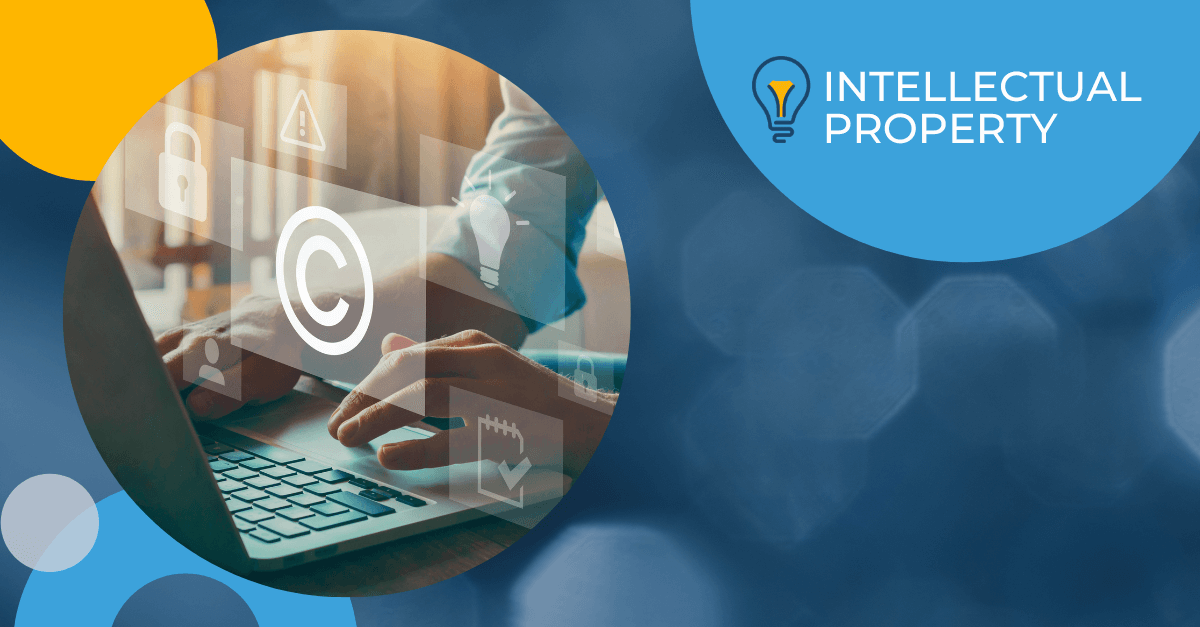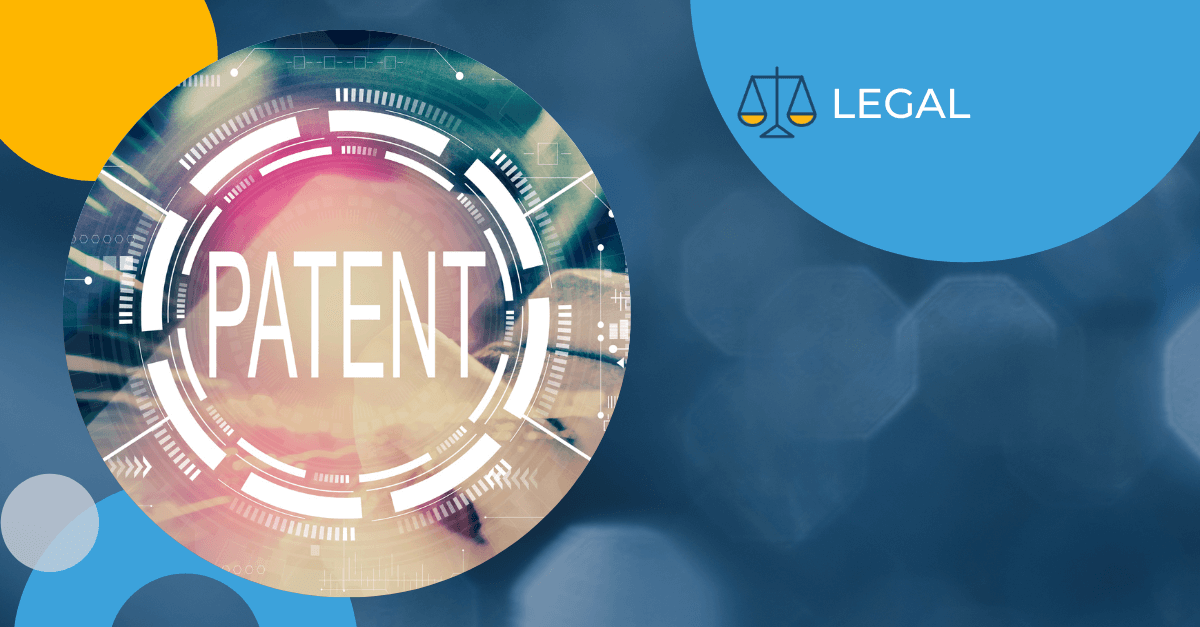Category: Intellectual Property
Applying for a Patent in South Korea

As one of the world’s most vibrant markets, the number of patents granted in South Korea by the Korean Industrial Property Office (KIPO) has been steadily rising. In just a single year, 2018, patent filings increased by nearly 5% over the previous year – and 3.6% of these (47,410 applications) were filed by international claimants.
If you wish to join the trend and patent your innovation in South Korea, it’s critical to understand how the South Korean patent application process works. For example, did you know that you must submit a Korean translation within 31 months from the earliest priority date if you’re filing a PCT application, but you only have 14 months if you’re using the Paris Convention route?
Learn more about the filing and examination process in South Korea by viewing our most recent article on IPWatchdog. There, we cover:
- Patentability in South Korea
- Available filing methods
- Korean language requirements
- Time and cost involved
About the authors:
This article was co-written by John Harris at Morningside and Jongseop Yun at AIP Patent & Law Firm.
Get the latest insights delivered to your inbox
Applying for a Patent in Germany

Did you know that Germany is now ranked as the most innovative nation worldwide? Bloomberg reports it’s a thriving European center for innovation where patent activity, high-tech density, and value-added manufacturing are on the rise.
If you wish to join the trend and patent your innovation in Germany, it’s critical that you understand how the the German patent application process works. For example, did you know that filing your patent application with the German Patent and Trademark Office secures your priority date – but it does not begin the official examination required to grant the patent?
Learn more about the filing and examination process in Germany by viewing our most recent article on IPWatchdog. There, we cover:
- German patent filing methods
- How to begin examination in Germany
- Germany’s language requirement
- The difference between German patents and utility models
About the authors:
This article was co-written by Morningside and Stolmár & Partner IP.
Get the latest insights delivered to your inbox
What to Know About Text Expansion and Contraction

You may have noticed that it can take more words to say something in one language than in another. For example, it takes three words in French (s’il vous plaît) to accomplish what you can with one word of English (please). Text expansion and contraction has a direct impact on the cost of translation, and it plays an extremely important role when considering design for multilingual websites, marketing campaigns, presentations – and pretty much any project that needs to be available in multiple languages.
What is text expansion and contraction?
This is a term used in the translation industry to account for the increase or decrease in a document’s final word count when it is translated. For example, French and other romance languages are known to be wordier than English. A document with 1,000 English words translated into French will convert into approximately 1,150 target words — a 15% increase in the document’s word count. That is text expansion. Asian languages like Chinese, Korean and Japanese will usually convert into fewer total words when translated into English. That is text contraction.
How does text expansion and contraction affect pricing?
Calculating expansion or contraction during translation is not an exact science. Most language service providers use ratios based on typical expansion/contraction rates for different language pairs. For example, in English to German translation, the word count usually contracts by 20%, and therefore this is the ratio that most translation companies use. (If you have ever seen a German compound word like Donaudampfschifffahrtsgesellschaftskapitänsmütze – which translates to “Danube steamboat shipping company Captain’s hat” – you’ll understand why.) Pricing can also be affected by a document’s subject matter, terminology, and the quality of the original writing — all of which can cause the text to expand more or less than the ratios predict.
How does text expansion and contraction affect design?
Let’s say you have a short product description in English (100 words) that needs to be translated into French for a PDF brochure, a video advertisement, and a software app. Here’s what could happen: A one-line English headline in a cleanly laid out PDF brochure can turn into a two-line French headline that bumps the rest of the copy down or even off the page. A video with music and graphics synced to English text can become unsynced when the text is translated to French. The menu buttons on a software app can end up expanding awkwardly or displaying incomplete words, causing a major UI problem. So, as you can see, translations that result in text expansion or contraction can have a very real impact on design quality. That’s why it’s important to work with a localization expert to ensure all of your materials are not only translated accurately, but visually adapted as well.
Trust a localization expert
Morningside has 20 years of experience working with businesses to linguistically adapt products, documents, websites and software applications for target markets around the world. It’s a process we call localization, where translation is just the first step. We then work to adapt layout, design and graphical elements to properly fit the translated text. Our team includes expert linguists, DTP specialists, voiceover talent, and dedicated project managers experienced in providing multilingual localization services in 200+ languages. If you have any more questions about text expansion and contraction, or localization in general, contact us below.
Get the latest insights delivered to your inbox
Strategic IP Services: Advantages for Technology Transfer Offices

Technology transfer offices determine a university’s intellectual property strategy for patent protection, licensing and commercialization, but surprisingly few have comprehensive internal capabilities. Given the enormity of the investment, the complexity of the work, and the potential revenue at stake, technology transfer offices that lack end-to-end internal resources need a strategic IP services partner to help them make the most of their patent portfolio.
There are myriad advantages to partnering with strategic IP services and translation partners but for brevity’s sake, let’s focus on three big ones:
A Focus on Cost Savings
This is perhaps the most relevant one because most technology transfer offices operate under extremely tight budgets until they can gain patent protection and find a suitable licensee or buyer. If you’re not currently partnering with IP services and translation providers, there’s an opportunity for significant cost savings.
Most tech transfer offices work with several outside counsel firms who, in turn, use foreign associates or external vendors for translations – and it’s the same for foreign filing. You can increase your purchasing power through consolidation because increased volume flowing through a single strategic IP service and translation provider means more significant discounts. A streamlined operation with lower costs associated with the IP makes said IP more appealing to potential licensees.
There’s No Additional Work
Technology transfer offices are operating under tight budgets, and the same is true for their internal resources – they are constrained. Securing your IP worldwide is an enormous effort, so it’s important to note that partnering with a patent translation & filing partner often eases the administrative burden. Consolidation of disparate processes creates a more streamlined workflow.
The Ability to Work With Multiple Outside Counsel
Technology transfer offices often work with multiple outside counsels depending on the subject matter or the discipline involved. On top of that, potential licensees usually prefer outside counsel. With that in mind, an IP services company understanding the landscape and existing relationships with many external counsels could be highly beneficial. Morningside, for example, works with 97% of the AmLaw 200 – so chances are we’re already working with them.
Technology transfer offices are situated at the confluence of limited resources and enormous potential, so they must maximize the available resources. As the most significant patent translation & filing company in North America, Morningside has the experience, the ability and the capacity to help technology transfer offices consolidate their efforts, save money, streamline their processes and ultimately maximize their potential. You can learn more about our services here.
Get the latest insights delivered to your inbox
How Do I Get International Patent Rights?

The idea of seeking international patent protection for your invention is as exciting as it is daunting. On one hand, expanding your reach to new places and new markets is thrilling. On the other, preparing successful patent applications that meet varying regulatory and language requirements is undeniably a major undertaking. One streamlined approach to getting all this work done — and done well – is to work with an experienced IP services company that can handle both patent translations and foreign filing. An effective IP services partner, like Morningside, can dramatically lower costs while ensuring consistent, reliable patent quality. Here’s how:
Quality claim construction
Patent examiners everywhere take the wording of applicant claims very seriously. After all, if your patent needs to be defended, or is challenged sometime down the road, the validity of your claim can hang on the precise meaning of individual words or phrases. “Inventions are not rejected,” says patent attorney Gene Quinn, President of IPWatchdog. “What is rejected is the articulation of the invention as it appears in the claims.”
Sometimes poor claim construction simply makes it impossible for examiners to approve a patent application. For example, perhaps the value or intention of an invention isn’t apparent, perhaps it reads as being similar to another party’s IP, or perhaps a lack of specificity results in an overly broad claim. If an examiner thinks the wording of a claim makes its meaning unclear, there’s a chance the application will be delayed, as clarification is sought, or outright rejected.
It’s important to remember that proper claim construction is just as important in the original application as it is in the translated applications for foreign Patent Offices. Working with an established patent translation company will ensure that the translators working on your patent have deep subject matter and technical field expertise. These highly trained linguists should work within an ISO-certified QA process to give you confidence that the carefully crafted language you put into your original application is translated exactly as you envisioned for your foreign language applications.
Finding the right language partner
A huge concern for obtaining international patent rights is the related cost – there are translation fees and various official fees for every country where you wish to file. And once you’ve made the decision to file, waiting for grant can be painstaking. After all, patent prosecution takes time in the best of cases (usually just under three years), and it can take even more time if the examiner requires any back-and-forth communication on specific claims clarifications. All of this waiting can prevent you from reaping the full commercial benefits of your innovation.
Your best defense against high costs and a long prosecution timeframe is to ensure that your application and its translations are written in an air-tight manner. Once you’ve identified the patent translation service with whom you’d like to work — we suggest you research each potential service’s reputation, features and pricing — you’ll need to prepare your USPTO patent application. Carefully construct your claims in English, ruthlessly refining your wording into exactly what it is you want to claim and say. Remember, this will serve as the baseline version from which all international versions will be derived.
Then, talk to your translation company about the tools they can provide to streamline the process. For example, high quality translation memory (TM) and glossary tools enable Morningside IP to provide repetitive text savings that improve accuracy and consistency across languages, while our network of foreign agents work to obtain the lowest filing fees for each country where you wish to be protected.
Don’t worry, be protected
By contracting the right patent translation company, this complex, multi-faceted project becomes infinitely more manageable, leaving you to focus on the excitement of expanding your international business presence.
Get the latest insights delivered to your inbox
Can AI Own Itself?

Artificial intelligence (AI) has evolved from a software concept into an active presence in our lives. We use it to manage our power grids, analyze medical data and keep planes in the air (just to name a few examples). In general, AI solves problems by performing automated analyses of data based on programmer-supplied algorithms. Often it also incorporates machine learning, where the program trains itself to become “smarter.” No longer is AI just an attempt to replicate human intelligence — it can have a mind of its own — and it can be different.
In recent years, patent offices around the world have seen a surge of AI-related patent filings. These AI patent applications have challenged our existing standards for patent eligibility, and they raise an important question about intellectual property (IP): When machine learning takes AI beyond its human programmers’ contributions, can AI own itself? The answer to this question is tricky because it will have to encompass not only who has a right to profit from AI, but also who’s responsible for insufficient or even damaging outcomes.
A word from WIPO
Last year, World Intellectual Property Organization (WIPO) General Director Francis Gurry said, “The fundamental goals of the IP system have always been to encourage new technologies and creative works, and to create a sustainable economic basis for invention and creation. From a purely economic perspective, if we set aside other aims of the IP system, such as “just reward” and moral rights, there is no reason why we shouldn’t use IP to reward AI-generated inventions or creations.” However, Gurry admitted that “this still requires some thought” and that “the answers are not clear.”
The current thinking on AI ownership
U.S. courts have been clear that machines are not individuals and thus can not own property or be held liable. Indeed, the general worldwide consensus at the moment is that AI belongs to its human programmer or programmers. There have been numerous test cases to back up this consensus. Artworks, for example, “created” by AI so far rely predominantly on the continual tweaking of algorithms by humans to achieve the final result. In such cases, AI indeed seems to be merely a tool employed by a human.
Still, questions remain. For example, much of what AI does is analyze massive data sets. This raises the question of whether the owners of such data are entitled to IP rights for inventions that used their data. The Internet of Things poses another question along the same lines: Who owns a program whose functionality depends on interaction with other proprietary devices or programs? There is no simple answer, and it gets even more complicated.
AI often incorporates chunks of publicly donated open source code. Should mechanisms exist that allow the contributors of such code to participate in earnings? A case in point is an AI-created painting that recently sold for half a million dollars. It was based in part on open source code written and uploaded by programmer Robbie Barrat, who asked in a tweet, “Am I crazy for thinking that they really just used my network and are selling results?” Making things even more complex is that fact that open source code may contain contributions from many programmers — so even definitively identifying its authors can be difficult, much less compensating them.
AI’s “black box” problem
So far, we’ve been discussing AI in general, but AI that involves machine learning is a whole other story, and one in which AI self-ownership may be more sensibly justified. This type of program can evolve well beyond its human input, becoming a “black box” whose workings are often largely unknown even to its original human “creators.” This raises its own particular set of IP questions: Does a human even want to own the IP of AI for which the decision-making process is unknown? Who would be responsible for an AI program that malfunctions or causes damage? There’s an additional IP wrinkle here, too: Who is responsible for AI that teaches itself to infringe on someone else’s patent?
While machine learning has proven to be a productive tool, there’s no question that it’s a bit unnerving and potentially dangerous in general. Without knowing how a program is actually deriving its conclusions — even if they seem to be more or less sensible — programmers are rightfully uneasy. Hanna Wallach, senior researcher at Microsoft, tells Quartz, “As machine learning becomes more prevalent in society — and the stakes keep getting higher and higher — people are beginning to realize that we can’t treat these systems as infallible and impartial black boxes. We need to understand what’s going on inside them and how they are being used.”
A radical rethink of IP and AI may eventually be necessary
The black box nature of machine learning AI, the complications of cross-application functionality, the difficulty of assessing genuine ownership of an AI program — all of these leave us to believe that current IP frameworks fall short when it comes to AI ownership. At the same time, WIPO Director Gurry believes, “The IP system as we know it is certainly not going out of fashion. It is being used more than ever before. But new challenges are emerging and the result may be an additional layer of IP, rather than the replacement of the existing system.” Only time will tell.
Get the latest insights delivered to your inbox
11 Things to Consider If You’re Filing in Japan

Surpassed only by China and the United States, Japan is one of the top 3 countries for patent applications worldwide. In 2018, the Japan Patent Office (JPO) received over 300,000 applications – yet only 19% of those applications were filed by non-residents. This imbalance emphasizes the challenges for international applicants looking to file in Japan, as they face high filing costs and potential challenges with patent translations. If you are new to patent filing in Japan, or if your organization files there frequently, here are 11 points you should keep in mind:
1. Language of application
For direct filing, the application can be filed in English, but the Japanese translation of the description, claims, drawings and abstract must be filed within 14 months from the priority date. For PCT national phase entry, the translation is due upon filing at the 30-month deadline, but a translation extension is available for up to two months from the filing date, without incurring additional fees.
2. Translation errors
Japan has the highest translation error rate and is the language most prone to inaccuracies in IP translation. Why is that? The writing system in Japan has four different alphabets, each of which are used for different purposes: Kanji, Hiragana, Katakana and Rōmaji. It’s absolutely critical that your patent is filed with the correct writing system. Any language errors or ambiguities could lead to costly office actions. Make sure to use an experienced patent translation company to ensure quality and accuracy.
3. First-to-file principle
Japanese law is based on the first-to file principle. This means that in Japan, IP rights are awarded to whoever files a patent first — regardless of the date of the actual invention. For this reason, it’s highly recommended to avoid talking to anyone about your idea without having them sign a non-disclosure agreement (NDA) first. Here is a sample patent NDA.
4. Searching for prior art
Foreign applicants can experience difficulties when searching for prior art in Japan as all previous patents are filed in Japanese. Machine translations of previous publications are available, though, in the Japan Platform for Patent Information database (J-PlatPat), free of charge.
5. Submitting a priority document
If you have already filed a priority document at the EPO or any of these patent offices, you do not need to submit the priority document again in Japan. That’s because of WIPO’s Digital Access Service (DAS), an electronic system that automates the secure transfer of priority documents between participating patent offices. The JPO became a participating member of DAS in April 2009.
6. Appointing a local representative
If an applicant does not reside or have a business address in Japan, they can still file a patent application at the JPO to establish the filing date. After that, however, there is a critical step to complete – the applicant must appoint a representative with a local address to conduct most subsequent procedures (there are a few exceptions). The representative is called a “Patent Administrator” and can be any patent attorney, attorney-at-law or firm registered to practice before the JPO.
7. Power of Attorney requirements
A power of attorney form is is not required for filing or for appointing a local representative. A POA may be required if the representative has to respond to a rejection, or if the granted patent is opposed. Note: If information on a representative is included in the application form, a power of attorney does not need to be submitted.
8. Submitting electronically
Applications can be submitted to the JPO in either paper form or electronically, though a substantial fee will be charged by the JPO for converting paper forms into electronic format. To lower costs, you should therefore submit electronically if possible.
9. Preparing the specification
The JPO is reasonably lenient on details in the specification. The specification must describe the invention in sufficient detail so that it can be completed by a person with skill in the relevant area/s. However, the JPO rarely allows new claims to be added, so it is important to include as much information in the specification as possible.
10. Additional fees for claims
The number of claims does not affect the initial filing fee, but each claim above the first increases examination and annuities fees. These fees have made Japan one of the more expensive countries in which to file your patents. To lower costs, you can reduce the number of claims after filing but before the request for examination.
11. Request for examination time frame
A request for examination must be made within three years of filing. If a request for examination is not filed within this time, the patent application will be considered withdrawn.
For information on how Morningside can help you lower translation & filing costs in Japan while ensuring quality, please contact us below.
Get the latest insights delivered to your inbox
How Translation Memory Can Improve Quality While Saving Time & Money

If you’re considering expanding your business into foreign language markets, a translation memory (TM) is one of the tools you can implement with your translation services company. A TM helps translators work more efficiently to reduce costs, increase consistency and reduce time to market. Here’s a closer look at all you need to know about TM.
What is Translation Memory?
A translation memory is a repository of original content and the translated versions of that content. For each new project, the translation services company inputs the new content into the TM, and the TM identifies repeated or similar content. Translators can then reuse previously translated content stored in the TM during future projects. As more content is translated, the TM continues to grow — so the more you put into the TM, the more you get out of it.
How Does a Translation Memory Work?
The TM compares existing content to the new content and identifies three types of segments:
Repetitions/100% match – This type of segment occurs when a new word segment matches exactly with another word segment in the TM. For example, let’s say that you previously translated this sentence: “To complete the installation, you need two AA batteries.” If this sentence exists in a new translation project, it would be identified as a repetition/100% match. The translator still needs to review the sentence for context and quality, but this type of segment takes the least time of the three to translate.
Fuzzy segment – This type of segment occurs when a word segment partially matches another word segment in the TM. Per the previous example, let’s say that your TM contains the following sentence: “To complete the installation, you need two AA batteries.” Now let’s say that your new translation project contains this sentence: “To complete the installation, two AA batteries are required.” In this case, the TM will recognize the sentence as a fuzzy match because the first part matches an existing segment exactly, but the second part is somewhat different. A fuzzy match takes the translator less time to work through than brand new content, but obviously it takes more time than a 100% match.
New segment – A new segment is one that either doesn’t match any existing segments or it matches a segment at less than 50%. A translator will have to translate this segment from scratch.
Note: A translator will see both the original content and the highlighted 100% match/fuzzy/new segments, and then decide whether to accept the translation that’s in the TM or modify it. Upon completion of any translation project, the TM will need to be updated so that it contains the latest information.
Benefits of a Translation Memory
A TM has three main benefits:
It Saves You Money – When repetitions/100% match and fuzzy segments are identified, they will have lower translation fees than new segments. If you’re working in an authoring environment where you have a content reuse strategy, you’ll probably have a lot of 100% match segments. If you don’t have a content reuse strategy, and/or if you have multiple writers, chances are that there will be a lot of fuzzy segments along with some 100% matches. In either case, a TM will make your translation projects more cost-effective due to its ability to recognize word segments.
It Improves Quality – Using a TM will increase consistency across different projects. It makes for a better customer experience when things are translated the same way across all documentation, websites and software applications. Even if more than one translator is working on a project, the suggestions from a TM can help translators remember which specific words to use. This can be especially handy if there are certain standard terms for your industry, product or service. If you work with your translation company to capture this terminology and get it translated before a project begins, you can incorporate it into your TM. A TM and a glossary of standard terms are two good tools to use together for the highest quality translations.
It Decreases Time to Market – A TM prepopulates new content with previously translated segments. A translator can then simply approve those segments and focus their energy on new content. You can really see the benefits of using a TM whenever content is repeated a lot, such as with technical documentation, or with larger projects such as website and software localization. With a TM in place, you can expect faster turnaround time and therefore decreased time to market.
Get the latest insights delivered to your inbox
How to Protect IP Rights when Outsourcing

Outsourcing is a well-established phenomenon in today’s global economy. Although initially associated with large, multinational companies, today outsourcing is growing among small-to-medium businesses as well. The key motivations for outsourcing include cutting costs, solving capacity issues and maintaining a clear focus on the core business. On the other hand, outsourcing raises a very critical question: How do I protect my intellectual property rights (IPR) – both for existing IP as well as any new IP that may be created? In this blog, we take a closer look at how to manage potential IPR risks without losing out on the benefits that outsourcing can bring to your company and bottom line.
Determine your IP strategy
Before jumping onto the outsourcing bandwagon, you should do an inventory of the IP that will likely be exposed. If you have third-party licensing agreements, make sure you are free to share the required IP with your outsourcing vendor. Where relevant, strengthen your IP portfolio by registering and filing patents, trademarks and copyrights – not only in your own country, but also in the countries where the outsourcing would take place.
You should also consider defining an initial outsourcing scope of work that does not expose your core IP. After you have established a good working relationship with an outsourcing vendor, you can extend the scope with greater confidence that your business-critical patents will be safe.
Make IP part of your due diligence
Finding the right outsourcing vendor is a long and arduous process. Be sure to make IP an important part of your due diligence, at several levels.
Start with the target countries themselves. Respect for IP rights varies from country to country and you should consider avoiding outsourcing to countries where IP laws are weak or poorly enforced. Two websites where you can gather relevant information are the International IP Index and Country IPR Toolkits, both of which are maintained by the US Chamber of Commerce.
Regarding the vendors, you should ensure that they have well-established procedures and a security infrastructure for protecting sensitive data. Make sure that they do thorough background checks on their employees and properly train them on IPR. While checking out their references, explore their track record of respecting and protecting intellectual property. Verify that they have insurance that will cover them for any damage you may suffer if your IP (including your trade secrets) are compromised.
Key IP issues for outsourcing agreements
When it comes to drafting the outsourcing agreement, there are a number of IP-related issues that should receive special attention. For example, the agreement should contain comprehensive, enforceable non-disclosure and non-compete sections. These issues are particularly important when your IP includes trade secrets.
The ownership of IP is also a critical issue. Not only should the ownership of existing IP be crystal-clear, but it should also be clear who owns any new IP that may be created during the outsourcing. Newly created IP is typically defined as “works for hire” that belong to the company paying for the work. But it is not unusual for outsourcing agreements to include options for mutual licensing of new IP. That’s all well and good, as long as it is clearly spelled out and understood the same way by both parties.
Tip: Organize and file every contract and agreement related to IP for easy future reference, just in case IP conflicts arise.
Establish clear communications
Poor communication is the #1 reason for the failure of an outsourcing project. Language barriers and cross-cultural misunderstandings can undermine the development of trust that is essential for a fruitful working relationship in general and for the protection of IPR in particular. All efforts invested in establishing strong communications in a multilingual, multi-cultural working relationship will go a long way to ensure successful outcomes.
Get the latest insights delivered to your inbox
Infographic: 2019 Trends in IP Litigation

Innovation is on the rise, with a handful of industries — namely IT, telecom and life sciences — driving patent growth worldwide. According to WIPO, “Patents granted by the EPO grew by 40% in 2016 – the fastest growth since 1983.” In 2016, the Chinese patent grant rate increased by 13% and in Japan and Korea it rose by 7%. As the number of granted patents grows around the world, the number of IP litigation cases has also grown – which is a serious concern for businesses and patent owners, given their high costs. Check out our infographic below to learn more about the latest trends in IP litigation and to get tips for overcoming IP litigation challenges.



